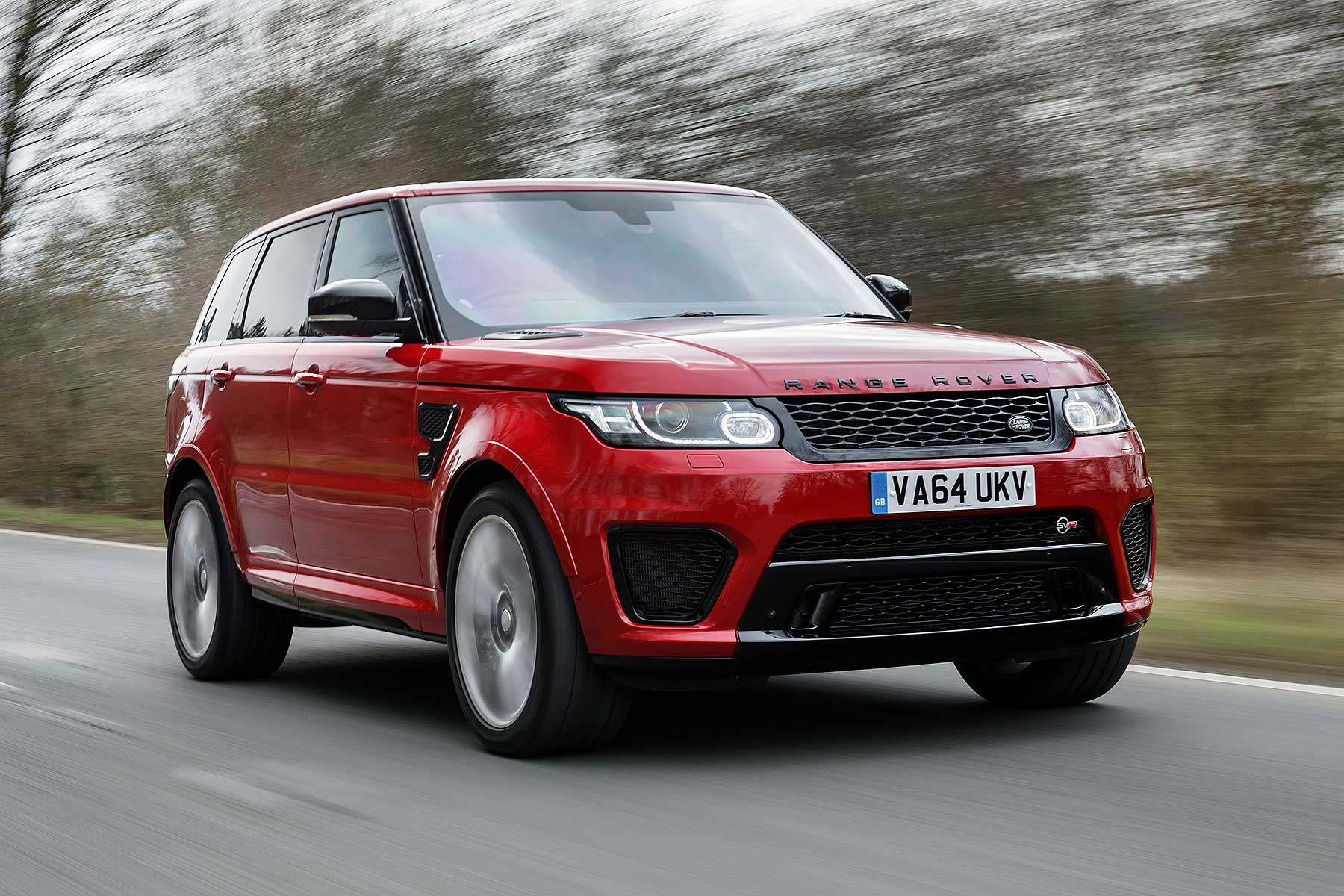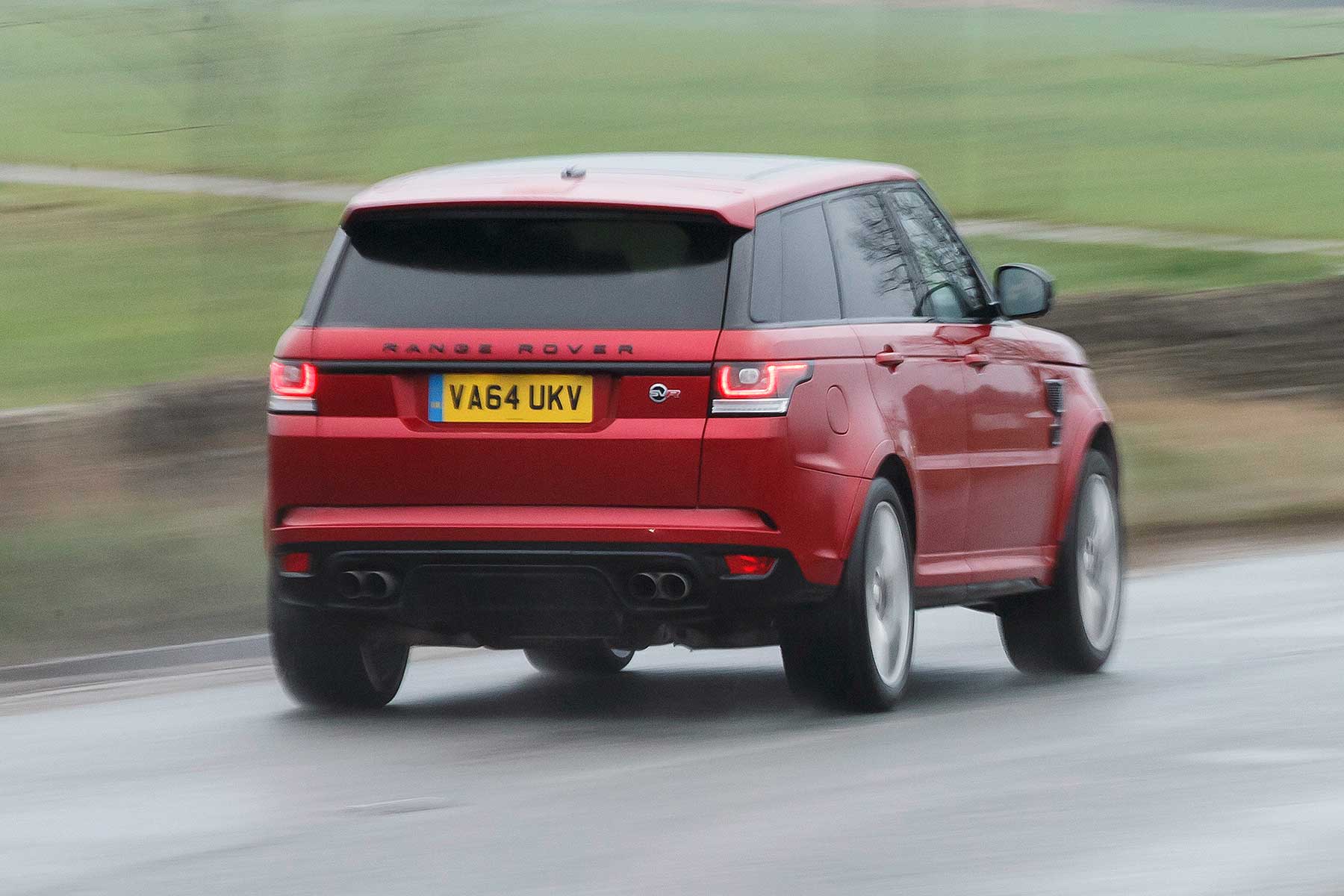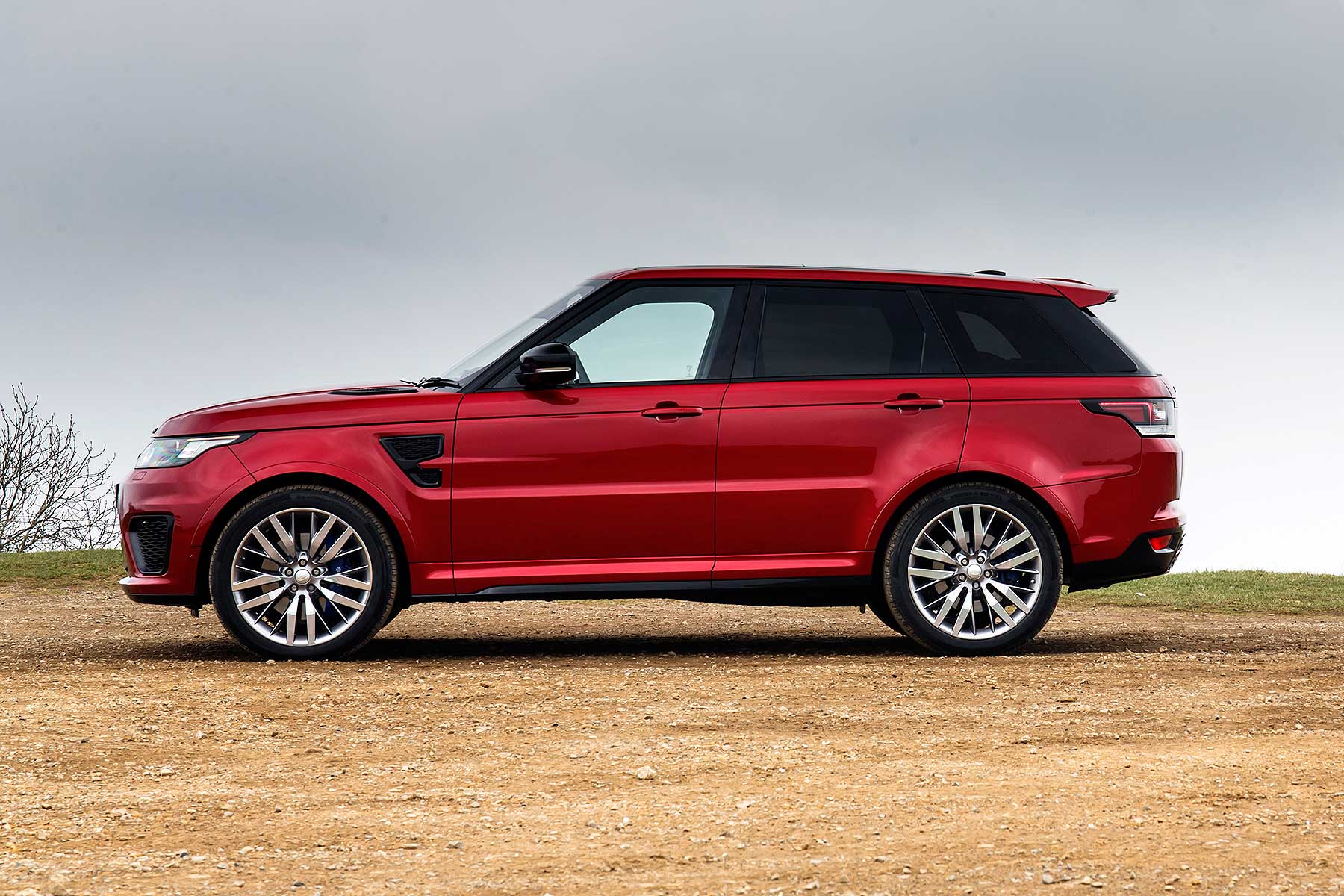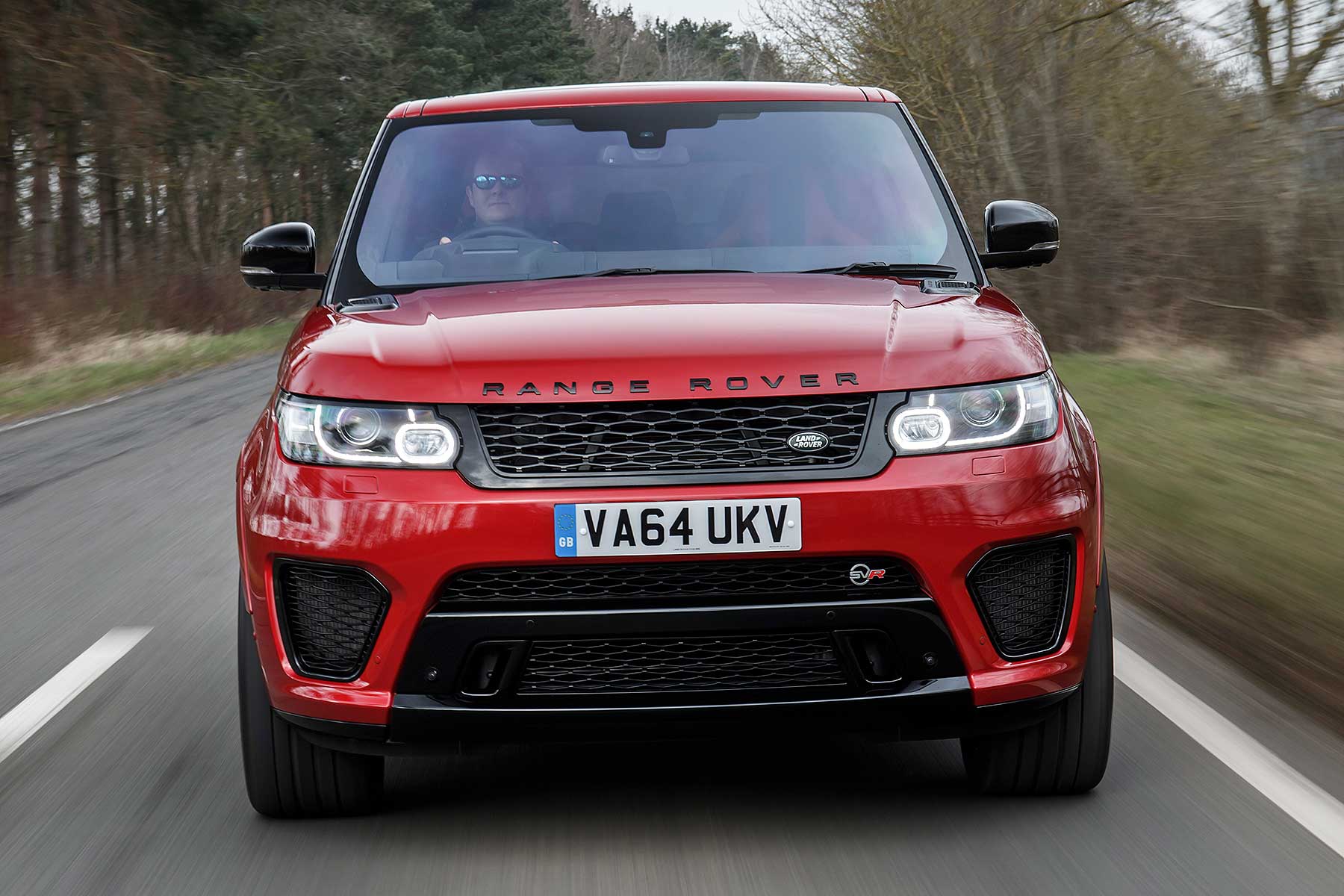 An Audi RS6 Avant is idolised by enthusiasts, as a dream all-weather, all-purpose all-rounder. Somehow, though, a high performance SUV, which does all the RS6 offers and much more, is not. Jaguar Land Rover’s crack new Special Vehicle Operations wants to change that, with its first bespoke-engineered product to market: the Range Rover Sport SVR.
An Audi RS6 Avant is idolised by enthusiasts, as a dream all-weather, all-purpose all-rounder. Somehow, though, a high performance SUV, which does all the RS6 offers and much more, is not. Jaguar Land Rover’s crack new Special Vehicle Operations wants to change that, with its first bespoke-engineered product to market: the Range Rover Sport SVR.
The SVO division is going to engineer many Jaguars and Land Rovers, but has started with the Range Rover Sport because it represents one of the biggest, highest-return market opportunities. Enthusiasts might find high-performance SUVs irksome, but customers love ‘em: the firm expects to sell 3,000 Range Rover Sport SVR a year.
To create it, SVO has taken the regular 510hp Range Rover Sport Supercharged, and honed it to the max. Most obviously, by dropping in the V8 engine from the yowling Jaguar F-Type R. At 550hp, it makes it the most powerful Land Rover ever, but it’s not just about that. Suspension has been tirelessly overhauled to up dynamic abilities accordingly – without, amazingly, losing any of the off-road prowess. It still has a low-range gearbox, can still wade a frankly scary-looking 850mm depth.
And it also corners at up to 1.3g, and can lap the Nurburgring in a ridiculous 8 minutes 14 seconds – until recently, a world record time for an SUV. This is much, much more than simply a Range Rover Sport with a hot engine – and the fact it’s so much more capable on track but no less capable off-road is what’s kept the development team so busy for the past few years…
You’ll have no trouble spotting it on the road, particularly with the optional 22-inch wheels and racy Continental SportContact 5 tyres (an ‘informed choice’ option over the standard all-weather 21-inch wheels). The engine’s hunger for air and cooling means the air intakes are bigger – even the fog lamps have been deleted to create space for airflow – the bumper is suitably toughened up and even the bonnet lettering is now moody black.
There are deep sills and wheelarch extensions, a new rear bumper with quad exhausts, rear diffuser and lift-reducing rear spoiler. One of the seven colours, Estoril Blue, is also unique to the Range Rover Sport SVR. Visually, you get a lot of clout for your £93,450. That heady price is clearly a bargain to some, too: orders already top 1,000. So, apart from ultimate Range Rover bragging rights, what will they be getting for their money?

What’s the 2015 Range Rover Sport SVR like to drive?
It really shouldn’t work. But it really does. It could so easily have been just a big, heavy SUV with a hot engine, but it’s so much more than that – and a more convincing performance machine than its chief rivals as a result.
Key to it is the fact it doesn’t feel like it weighs so much. It sounds unlikely, but you drive it with your fingertips, not your elbows, and sense precision accuracy below the pointy, nimble front end, rather than just a plough-on mass of weighty understeer.
This is particularly so in Dynamic mode; twist the dial in the centre console to weighten the steering, sharpen the throttle, stiffen the damper profile and crisp up the active anti-roll. In this guise, the SVR is particularly low-effort and responsive – so long as you’re half-mindful of the fact you’re controlling a lot of mass and are respectfully smooth as a result, it steers with unbelievable economy and dialed-in bite. Something so big really shouldn’t be so adept.
This is all why it’s such an effective A-road (even B-road) sports car. You don’t have to fight it and can thus place it with precision, can see so much of the road ahead to be smooth and fluid – and, crucially, won’t be unduly disturbed by the many craters, rough edges and undulations found on ruinous British back roads. It’s more comfortable than almost any genuine sports car, and you can drive it more quickly as a result. Quicker point-to-point than a Porsche 911 or Audi R8? We’d place bets it would be close.
In normal mode, it’s also impressive, but is more fluid and a touch less focused. The gains over the regular Supercharged are still appreciable, particularly the firmer steering, much stronger grip and general dynamic cohesion, but the ride is also more pliant, the engine less edgy and gearchanges not as sudden (the latter are electric-rapid in Dynamic guise). Given how your passengers will be jittered by the focused ride in ultimate tune, they may prefer this.
Of course, it’s fast. The F-Type R V8 engine has surging, no-lag pull and fantastic bite at the top end: 0-62mph in 4.7 seconds says it all. The noisy only adds to the impact: the active exhaust makes it purposefully cultured in normal mode but, when the active part kicks in and all four pipes are used instead of the regular two, it sounds sublime. It’s a pure, rich V8 roar, somehow not as aggressive as more guttural German rivals, but just as rewarding. The fact its active valves means you don’t get the weird Darth Vader-like rush effect of the competition is another plus.
Something this big and fast needs big, tireless brakes. The discs and calipers are actually unchanged over the standard V8, but there’s much greater cooling around them and the same high-capacity brake fluid as in Jaguar’s carbon ceramic models is used. The pedal’s still a bit soft and takes some travel to bite, but there’s plentiful reassurance once they are.

Could the 2015 Range Rover Sport SVR replace an enthusiast’s Audi RS6?
The Audi RS6 is the cool choice for the former Porsche 911 driver who’s now got a family, a business and a smattering of active lifestyle things they’re into. People want to be Audi RS6 drivers; they want to live that lifestyle. That’s why people buy Audi RS6.
Thing is, the Range Rover Sport SVR offers the practical aspects of an Audi RS6, and more. It can also do what it does on a backroad, or a racetrack – and more: the incredible off-road prowess adds authenticity that makes it much more than just a tuned-up SUV.
Could the SVR thus be the car RS6 drivers want to move into? It’s a big question, given the high regard in which the RS6 is held, but the SVR can beat the sweet blend of usability, practicality, all-weather ability and racetrack ability that’s stood the RS6 in such good stead.
It’s not a one-dimensional machine: it has a lush, refined, spacious cabin that’s really enhanced by new one-piece backrest torso-hugging seats. The two buckets in the front are replicated in the rear too, although first glances are deceptive, because it can still seat five – not seven, though: the third-row seats are not available here, because of the defined performance parameters sought by the engineers.
It also has a big boot, a welcoming cabin, a regal view out and, if you spend an eye-watering £5,000, a superb Meridian audio system. It’s a lovely place to be and miles are soaked up with startling effortlessness – the refinement, feeling of depth and air-suspended comfort in everyday mode makes you yearn to use it every day. It may take time for others to come round but, just as we’d like to have an RS6 as a commuter, we’d love to have an SVR as our daily driver.
Even if it would cost us a fortune: average economy on our swift but not racetrack-speed day of testing saw an average of 14mpg recorded.

Verdict: 2015 Range Rover Sport SVR
Up to now, sporting SUVs have elicited rage from enthusiasts: BMW should concentrate on real M cars, not X5 M and X6 M. They may have a point: such cars are good, but not convincing. The Range Rover Sport SVR needs no such polite excuses though. It really does work.
It’s fast, it’s focused, it really handles, it demolishes broken back roads without destroying its passengers in the process – it’s an SUV that defies physics with its grace and pace. But, remarkably, without losing the Land Rover SUV capability: it’s just as impressive off-road.
OK, it’s not cheap – it’s a six-figure car once you’ve added on the essential options – but it’s clear where the money’s been spent. Not everyone will get it, and it will remain anathema to a hardcore, but for the open minded who appreciate really well developed product, it’s worth considering over any performance SUV rival.
Rivals: 2015 Range Rover Sport SVR
- Porsche Cayenne Turbo S
- BMW X5 M/X6 M
- Mercedes-Benz ML 63 AMG
- Audi RS6
The Range Rover Sport held the Nurburgring SUV lap record until Porsche rolled out the new Cayenne Turbo S: German pride dented, perhaps? The BMWs X5 M and X6 M are new market additions that build upon the so-so old ones, the ML 63 AMG is an underground alternative and the Audi RS6 is the all-year-round performance car that will guarantee you respect on internet forums.
Specification: 2015 Range Rover Sport SVR
Engine 5.0-litre supercharged V8
Gearbox Eight-speed automatic, four-wheel drive
Price from £93,450
Power 550hp
Torque 502lb ft (680Nm)
0-62mph 4.7 seconds
Top speed 162mph (260km/h)
MPG 22.1mpg (12.8l/100km)
CO2 298g/km